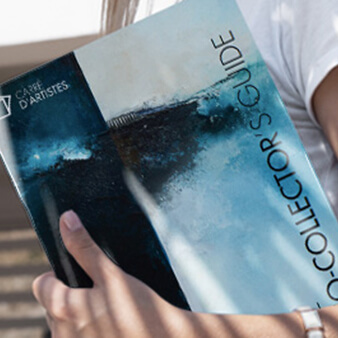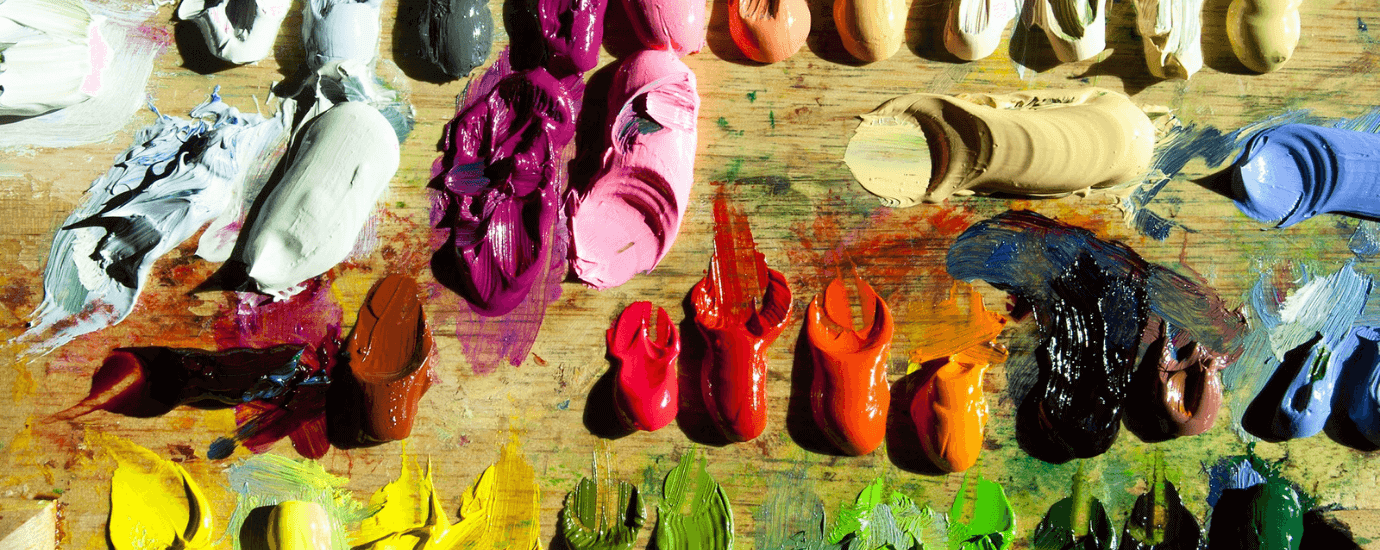summary
- What is the composition of oil paintings?
- The two oil paint ranges: fine or extra-fine, which one to choose?
- Which colors to choose to start oil painting?
- What are the colors to choose when you are a beginner in oil?
- Which mediums to choose to paint with oil?
- Oil painting: what budget?
- Portrait of Georgi Kolarov
- Oil paintings at Carré d'artistes
WHAT IS THE COMPOSITION OF OIL PAINTINGS?
Oil-based paint is composed of pigments.
It is these pigments that give it intense and rich colors.
The second component is oil, usually linseed oil or purified eyelet oil.
The oil is the binder that allows to agglomerate the pigments between them and obtain a soft and malleable paste.
Turpentine or petroleum spirit may be used to dilute oil paint.
To mix the pigments with the binder, grind.
In the old days, the pigments were ground with a little water, then left to dry before renewing the operation with oil.
For a long time, artists made their own oil paintings, with apprentices, in their workshops.
They used different oils and products, which contributed to the evolution of the composition and technique of oil painting.
Do not hesitate to read our article to learn the best techniques to master oil painting.
Right here: 8 tips for learning oil painting
THE TWO RANGES OF OIL PAINTS: FINE OR EXTRA-FINE, WHICH TO CHOOSE?
The fine paint
Tubes of fine paint are study paintings.
The shades are ideal to start to spot themselves among the colors, to make their first mixes and to build a palette of essential colors in their workshop.
The range of fine paint is optimal to make an oil painting without breaking the bank, with a small budget.
It is used by beginners and art students, not to waste too much paint and to train.
Experienced painters also choose it for their sketches or to make the underlayments of their paintings.
The level of pigments is less concentrated in the fine range than in the extra-fine range and the fineness of grinding is greater with the extra-fine oil.
Extra-fine painting
With extra-fine paint, the grinding of pigments and oil is much finer and the colors are richer.
It is a refined painting, suitable for amateurs and professional painters.
The first advantage of extra-fine oil paint is its quality.
The second is that it unfolds in a multitude of colors.
Most extra-fine tube paints are made with a single pigment.
This ensures optimum purity for your oil painting and for your blends.
They also last over time and offer better storage conditions.
Because of its high quality and mono-pigment colours, extra-fine oil paint is more expensive than study paint or fine paint.
You can also find a "superfine" paint, the quality of which is halfway between fine and extra-fine paint.
Oil painting is beginning to fascinate you, but you lack knowledge in the technique?
There is an article to know everything about oil painting.
WHICH COLORS TO CHOOSE TO BEGIN OIL PAINTING?
Are you a beginner in oil painting?
In this case, we advise you to limit yourself to the number of color tubes for your first tables or your tests.
Why limit yourself?
Because if you choose a lot of paint tubes, you may not use all the colors!
In addition, as time goes by, unused paint tubes eventually dry out and the oil may leak.
To avoid spending your paint budget on tubes you won’t use, choose the essential colours, that is, primary and secondary colours.
A 10-12 color palette, to start with, is ideal.
And if you need a nuance that you don’t have, it encourages you to test your own mixtures!

WHAT COLOURS SHOULD YOU CHOOSE WHEN STARTING WITH OIL?
White and black (such as zinc white and ivory black)
Yellow and orange (the shades of cadmium)
Red (primary red and vermilion)
Blue (cobalt, ceruleum and ultramarine...)
Brown (ochre, earth of Siena, earth of shade...)
WHICH MEDIUMS TO CHOOSE FOR OIL PAINTING?
There are several types of auxiliaries you can use to make an oil painting:
Oil :
We add oil with the oil-based paint to be able to work "fat on lean" (that is to say start with a non-greasy layer, add a little oil for the second layer, a little more for the third, etc.), namely that the more a paint is rich in oil, the slower it will dry.
The siccatives :
You can use a siccative to speed up the drying time of your painting, but these products are to be used sparingly (between 1% and 5% of your paint, or 2 or 3 drops of siccative).
Gasoline :
Turpentine oil allows you to dilute the oil paint and thus reduce the oil content of your paint and use a more "lean" paste.
There are few mediums to paint for oil paint compared to acrylic, but you will still find mediums to speed up drying, increase the shine or transparency of your paint, glazes, etc.
The varnish :
There are varnishes to retouch and final varnishes for your oil painting; the varnish to retouch allows to correct an area of the painting and the final varnish is essential to protect your painting from time, dust and pollution, so that it keeps as long as possible.
OIL PAINTING: WHAT BUDGET?
Beginners: what budget for oil paint?
Oil-based paint is a noble paint.
Its price has always been high, especially in comparison with acrylic paint.
For a beginner, it is not necessary to spend much for sketches and essays in order to train and learn to paint.
For your first paintings, we advise you to invest in fine paint, rather than extra-fine, to avoid ruining yourself.
However, avoid smaller prices that are almost always a sign of poor quality.
Allow on average between €2 and €5 for the tube of fine oil paint, to start well.
Experienced painters: what budget for oil painting?
If you are a professional or experienced painter, fine painting can quickly disappoint you as to its quality.
In this case, choose extra-fine paint tubes for an oil painting.
Depending on the brands, the quality of the pigments and the fineness of the grinding, the price of a paint tube can quickly increase.
It is up to you to define your needs, your priorities and your budget, knowing that the starting price of an extra-fine oil tube is on average €5 and can amount to €15, or even more.
You are now an expert on oil painting, you have the equipment, but you lack inspiration?
So feel free to read our article on the masterpieces of oil painting that inspire contemporary painters and amateurs.
PORTRAIT OF GEORGI KOLAROV
After entering the School of Arts in her hometown, Georgi Kolarov (Joro) specializes in Light Art, which means that her artistic research is induced by light and that her painting is expressed through it, which is still the case today.
He undertook to paint his city, his inhabitants, his family, all the little things that surrounded and animated him, not losing sight of what makes the sensitivity of his work: the play of reflections, shadows and lights.









1.png)






